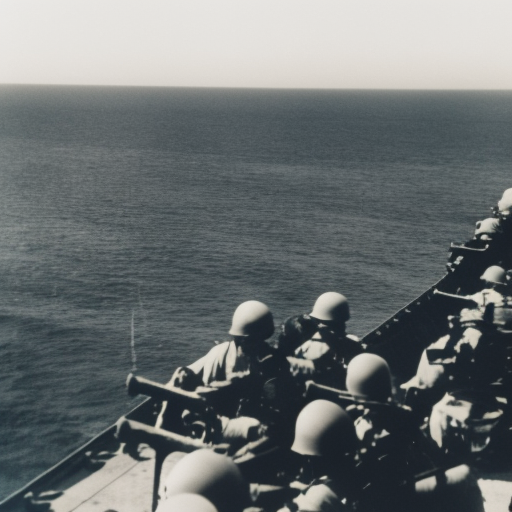Summary: Naval Operations in the Dardanelles Campaign
The naval operations in the Dardanelles campaign, also known as the Gallipoli campaign, took place during World War I. The objective of the campaign was to secure a sea route to Russia by capturing the Ottoman Empire’s capital, Constantinople (now Istanbul). The campaign involved a series of naval assaults on the Dardanelles Strait, which connects the Aegean Sea to the Sea of Marmara.
The Opening Moves
In February 1915, a combined British and French fleet attempted to force their way through the Dardanelles Strait. The Ottoman Empire, however, had fortified the strait with minefields, shore batteries, and mobile artillery. The initial attempt to break through the strait failed, resulting in the loss of several ships.
The Submarine Offensive
Following the failed naval assault, the Allies shifted their strategy to a submarine offensive. British submarines were deployed to disrupt Ottoman shipping in the Sea of Marmara. Although they managed to sink several Ottoman vessels, the submarines faced numerous challenges, including the treacherous currents and shallow waters of the strait.
The Minesweeping Operation
Realizing that the minefields posed a significant obstacle to their naval operations, the Allies launched a minesweeping operation in March 1915. Minesweepers from various nations were brought in to clear the strait of mines. Despite the dangerous conditions, the operation was successful in clearing a path for the fleet.
The Second Naval Assault
With the strait cleared of mines, the Allies launched a second naval assault on March 18, 1915. This time, the fleet included battleships, cruisers, and destroyers. The objective was to destroy Ottoman shore batteries and clear a path for the fleet to reach Constantinople. However, the Ottoman defenses proved resilient, and the naval assault was once again repelled with heavy losses.
The Land Invasion
Following the failure of the naval assaults, the Allies decided to launch a land invasion of the Gallipoli Peninsula. The plan was to secure the high ground and neutralize the Ottoman defenses from land. The land invasion began on April 25, 1915, with British, French, Australian, and New Zealand troops landing on various beaches.
The Stalemate
The land invasion quickly turned into a stalemate, with both sides entrenched in a series of trenches and fortifications. The rugged terrain and the determined defense of the Ottoman forces made any significant advances difficult. The campaign became a protracted and bloody battle of attrition, with heavy casualties on both sides.
The Evacuation
Realizing the futility of the campaign, the Allies decided to evacuate their troops from the Gallipoli Peninsula. The evacuation, which took place between December 1915 and January 1916, was a remarkable feat of military planning and execution. Under the cover of darkness, the troops were withdrawn without alerting the Ottoman forces.
Legacy
The Dardanelles campaign was a costly failure for the Allies. The campaign resulted in heavy casualties and failed to achieve its objective of securing a sea route to Russia. The Ottoman Empire, on the other hand, successfully defended its territory and gained a significant morale boost from repelling the Allied forces.
In conclusion, the naval operations in the Dardanelles campaign were a critical chapter in World War I. The failed naval assaults, followed by the land invasion and eventual evacuation, highlighted the challenges faced by the Allies in their attempts to secure a sea route to Russia. The campaign had a lasting impact on the war and contributed to the reshaping of the Middle East in the aftermath of World War I.












